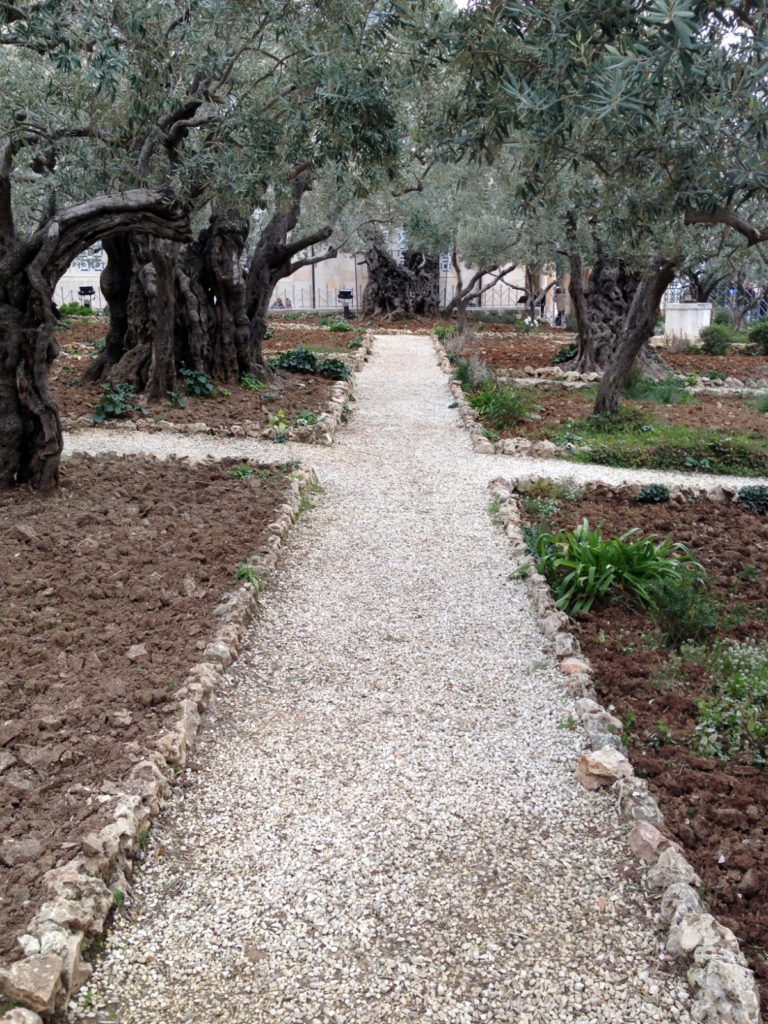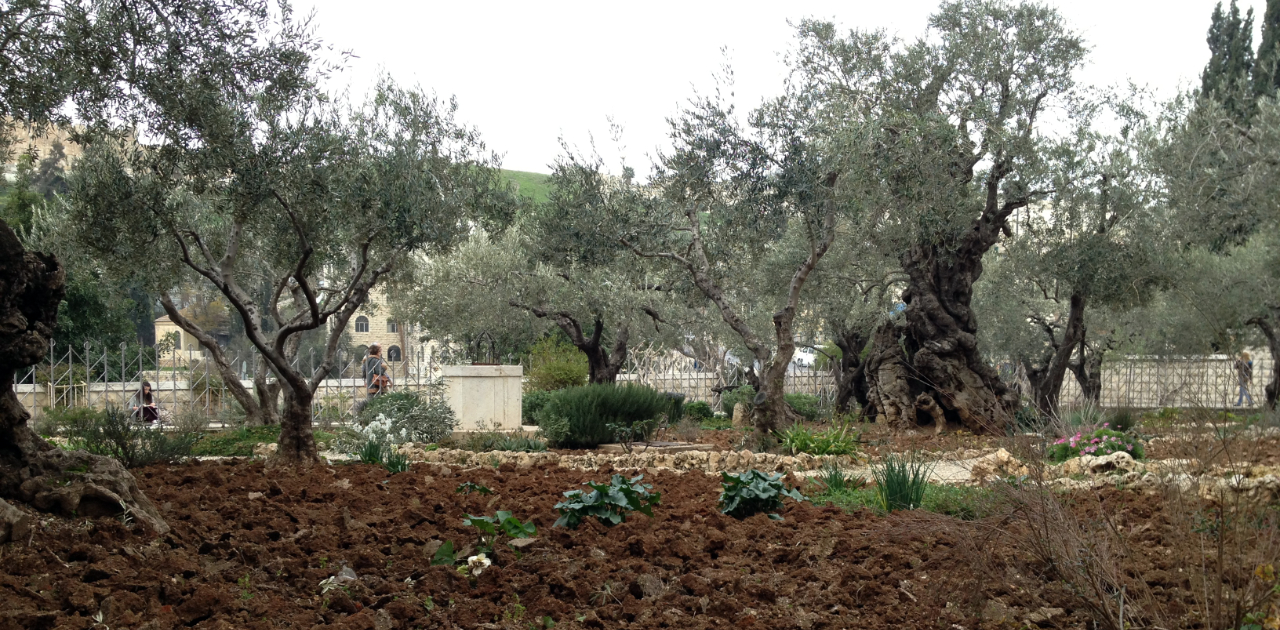On every visit to the Holy Land, we visit the Mount of Olives while we are in Jerusalem. We start at the top and make what is called the “Palm Sunday walk” down the hill. The last stop on that walk before we cross the Kidron Valley again, usually headed for Mt. Zion, is the Garden of Gethsemane and the adjacent Church of All Nations. This place is where we remember the final scene before Jesus’ arrest. He left his disciples to keep watch, and “going a little farther, he fell with his face to the ground and prayed, ‘My Father, if it is possible, may this cup be taken from me. Yet not as I will, but as you will.'” (Matthew 26:39)

At Gethsemane, we sit in the grove among the old olive trees and remember that what started in a garden with a choice was overturned in another garden with another, more faithful and selfless choice. In the Garden of Eden, the man and the woman chose rebellion, sin, and death. In the Garden of Gethsemane, Jesus chose to take all of that on himself in order to free us from them. Even knowing the suffering to come, he chose to be faithful to his Father’s will and to be the perfect expression of God’s grace.
The Apostle Paul put it this way: “Just as one trespass resulted in condemnation for all people, so also one righteous act resulted in justification and life for all people. For just as through the disobedience of the one man the many were made sinners, so also through the obedience of the one man the many will be made righteous.” (Romans 5:18-19)
This post is published during Holy Week, when we usually think about Gethsemane and the suffering and death of Jesus. However, I hope that we might find any time to be a fitting time to remember what happened in those gardens and to remember the choice of our gracious Lord that set us free.


